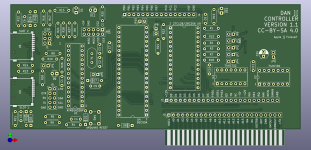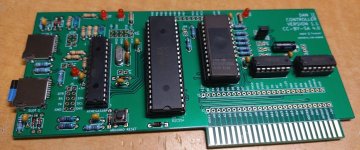Hello, I designed a easy to build Apple ][ SD card mass storage device. It uses only five commonly available through-hole integrated circuits. It supports two SD card slots. It includes all of the ROM firmware and gerbers.
You can find it at the github

 www.github.com
www.github.com
An image of the card is below.
I hope you enjoy it.
Dan

You can find it at the github
GitHub - profdc9/Apple2Card: Apple II Peripheral Card that Interfaces to a ATMEGA328P for SD card storage
Apple II Peripheral Card that Interfaces to a ATMEGA328P for SD card storage - GitHub - profdc9/Apple2Card: Apple II Peripheral Card that Interfaces to a ATMEGA328P for SD card storage
An image of the card is below.
I hope you enjoy it.
Dan


